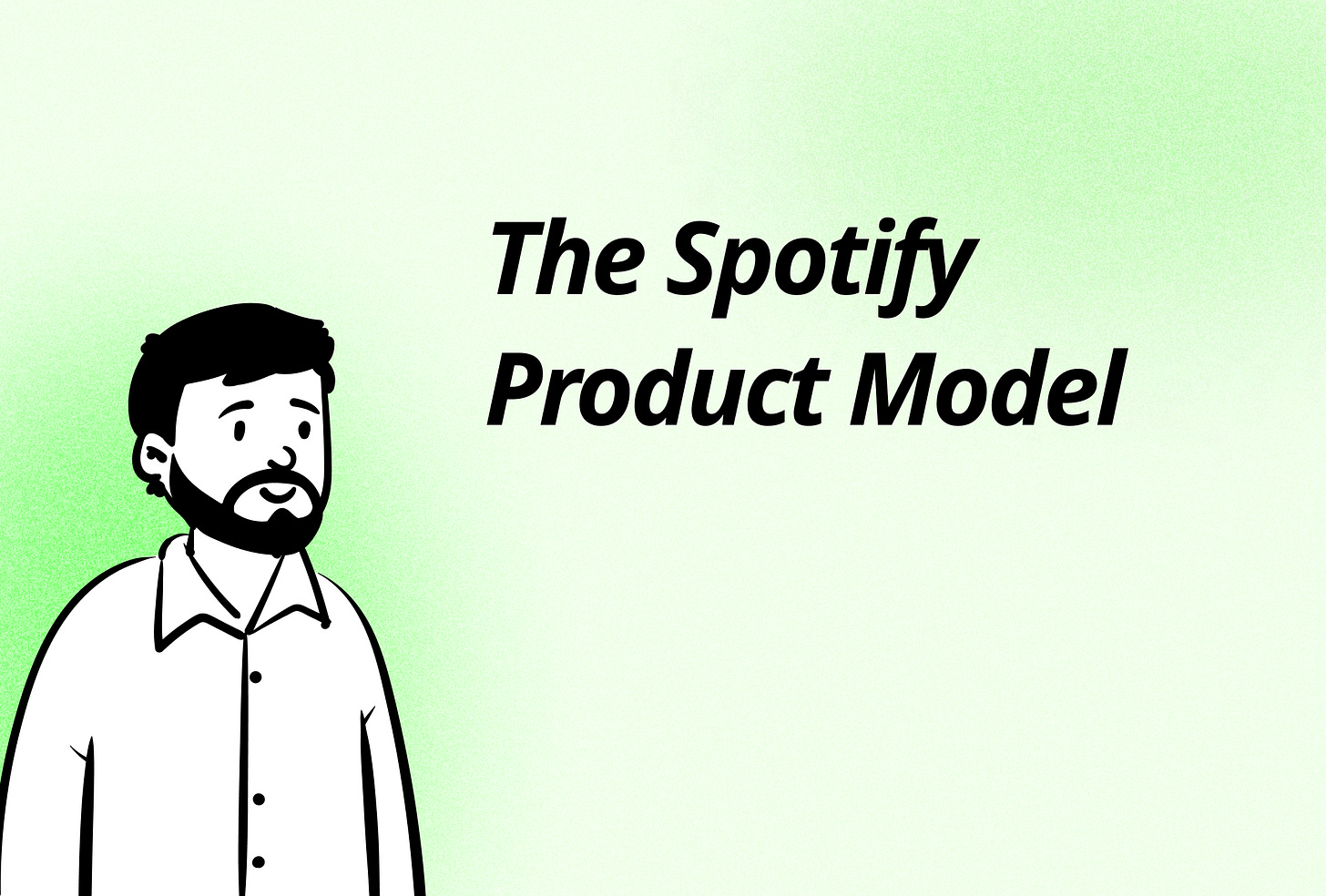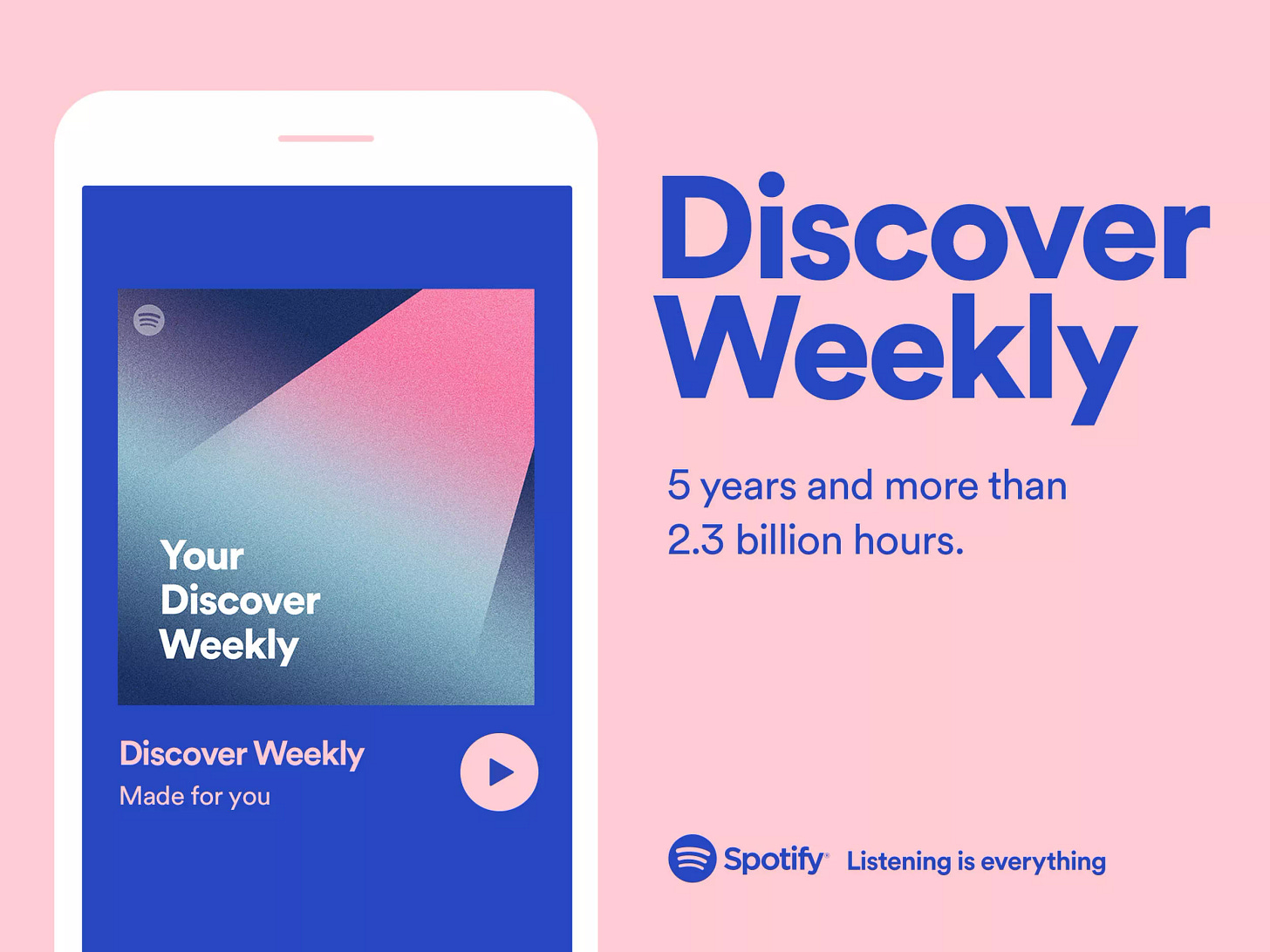The Spotify Product Model: Scaling Product Decisions Through High-Trust Teams
How Spotify's agile teams and frameworks drive smarter, faster product decisions
Reading time: 7 mins
When I started working and earning my own money, the first app I paid for was Spotify. They had all the songs I wanted to listen to, and surprisingly, the ads were annoying enough to make me want to pay for the premium version. But, they’ve earned my trust since then.
By 2014, Spotify faced an existential challenge - Apple and Amazon were gearing up to dominate streaming and suddenly, “millions of songs in an app” wasn’t differentiating enough. It became the base line.
Stakes were clear - innovate or be crushed by popular giants. Their old waterfall approach to product development was too slow, rigid and too risky to let them innovate fast.
It wasn’t just about moving faster—it was about building smarter, scaling better, and staying ahead in one of the most competitive markets in tech.
Before you read further…
I will divide all my articles into 3 digestible sections:
Principles - the knowledge around the topic
Perspectives - my opinions and thoughts around the topic
Action - key takeaways for you, the reader, to try out
I will try to keep the sections as concise as possible. If you would like me to add more high level sections or if you have any suggestions, please feel free to comment on this post.
Principles - How Do You Take Impactful Product Decisions?
Spotify’s success didn’t come from a single brilliant feature. It came from a set of guiding principles that shaped how they decided what to build, how to build it, and how to manage risk.
Joakim Sundén, an early coach at Spotify, defines three main dimensions of the Spotify Product Model:
Product strategy - how the company decides the most important problems to solve
Product discovery - how they solve the problems and discover solutions worth investing resources into
Product delivery - how they build, test and deliver those solutions to customers
You’ll see all 3 dimensions come into play once we discuss the actual prioritization framework.
Build autonomy and trust
The approach we’re discussing is rooted in autonomy. If you’re a leader who isn’t in favour of letting teams take decisions without involvement of senior management, you might want to rethink your management style.
Teams are given the freedom to make decisions, take risks, and own their outcomes - without waiting on endless approvals. This allows for faster innovation and response to user needs.
Independent teams (squads and tribes) operate with full ownership, supported by a lightweight structure (tribes, chapters, and guilds) to foster collaboration and alignment
Teams are trusted to deliver without heavy oversight, creating a culture of self-accountability
Case Study - Spotify’s Discover Weekly
When Spotify set out to create Discover Weekly, the goal was simple: make discovering music effortless for “lean-back” listeners—those who wanted great playlists without the hassle of curating them.
To achieve this, Spotify took a data-driven and user-focused approach:
Behavioral insights: They analyzed billions of user-generated playlists to identify patterns in song groupings. This allowed them to understand the nuances of personal music preferences
Collaborative filtering: By using machine learning, Spotify identified songs that listeners with similar tastes grouped together, creating a personalized playlist for each user
Small-scale testing: The feature was rolled out to a limited audience, enabling the team to tweak the algorithms based on real-world feedback
The result? Discover Weekly became an instant hit. Within its first year, Spotify users streamed over 5 billion tracks through the feature.
Why it worked:
A focused team worked independently to solve a clear user problem
Early testing ensured they could refine the feature before scaling
While the feature relied on machine learning, it was grounded in deep understanding of user behaviour
Manage risk systematically
Spotify’s innovation isn’t just fast - it is deliberate. Every feature they build passes through a structured framework to reduce risk - Think it, Build it, Ship it, Tweak it - and it is central to how they deliver impactful features consistently.
Here’s how it works:
Think it: Prototypes are created to test ideas quickly and cheaply. The focus here is on reducing value risk—making sure the idea solves a real user problem
Build it: The leanest possible version (MVP) is developed to validate feasibility and usability
Ship it: Features are rolled out incrementally, gathering real-world user feedback
Tweak it: Data from the rollout is used to refine and improve the feature post-launch
Why this matters:
Prototyping ensures only strong ideas make it to development, saving time and resources
Incremental rollouts allow Spotify to learn from actual users instead of relying on assumptions
Instead of treating the launch as the final line, Spotify uses it as the starting point for refinement
For example, when building Discover Weekly, the team didn’t dive straight into a full release. They used early prototypes to test their recommendation algorithms with small groups of users, ensuring the feature resonated before scaling it to millions.
Prioritize continuous delivery
The smartest teams don’t rush to build—they validate, test, and adapt every step of the way. By breaking product development into manageable phases, you can reduce risk and make better decisions, without overwhelming the user.
Speed isn’t just about working faster - it’s also about delivering more frequently. Continuous delivery allows teams to ship small, iterative changes rather than waiting for massive releases.
Why it works:
Each release provides data to refine features and reduce risk
Teams can experiment without derailing larger projects
Incremental updates keep the product fresh and aligned with user needs
This approach drives measurable results:
Spotify deploys code multiple times a day, allowing for rapid experimentation
Incremental updates helped Spotify scale to 500 million users worldwide while consistently improving core engagement metrics like session length and retention. As of second quarter of 2024, the active user count is at 626 million
Perspectives - I’m Pitching This to My Team on Monday
What I love about this approach
I learnt something new while researching for this article - Product Risk. I’d heard of it, but never knew how it factored into product decision-making.
Since they release fast and test with a smaller user base while gradually rolling out the feature to everyone, they reduce that risk by several folds. Imagine what would happen if you took months to build something only to face reality when users don’t want that feature or new product.
I am definitely pitching this to my team this week.
The phased approach (“Think it, Build it, Ship it, Tweak it”) ensures fewer resources are wasted on unproven ideas. Multiple teams can come up with ideas for new products/features (in smaller teams, it could be multiple ideas from the same team). Subjective decisions are taken and you remain with only a few ideas that show merit. Not a single line of code needs to be written before the Build It phase.
I’ve known many teams falling into classic the trap of overbuilding features nobody needs.
I see a few challenges in adoption
Scaling autonomously is hard
Not every company has the resources to replicate Spotify’s agile squads and frameworks
Without strong leadership and alignment, autonomy can lead to siloed efforts or duplicative work
Intangibility of the “Think it” stage
The “Think it” phase heavily relies on intuition and team creativity, which can make decisions subjective. Let’s be honest - not everyone is mature enough to take good subjective decisions
For smaller teams without Spotify’s data infrastructure, validating ideas at this stage can feel more like guesswork
Continuous delivery requires discipline
You know very well how adept your team is, when it comes to delivering continuously without burning themselves out
For teams new to this model, shipping fast might lead to shipping sloppy work
Spotify’s approach is undeniably effective, but the real lesson isn’t to copy their model outright. It’s to adapt their principles—autonomy, risk reduction, and iteration—to fit your team’s size, culture, and goals.
Key Takeaways - Putting It In Action
Empower Teams Through Autonomy
Give teams ownership of specific areas to innovate faster and make decisions independently
Build trust by focusing on outcomes, not micromanaging every step
Reduce Risk at Every Stage
Test ideas early with small prototypes to validate their value before investing heavily
Use phased development like “Think it, Build it, Ship it, Tweak it” to adapt as you go
Deliver and Improve Continuously
Ship small updates frequently to gather real-world feedback and keep improving
Invest in the right infrastructure to support rapid, high-quality releases
Align Teams With Clear Goals
Set outcome-driven goals so teams stay focused and aligned without rigid control
Foster collaboration by balancing independence with lightweight alignment mechanisms
Build for Experimentation and Impact
Start small, fail fast, and treat every experiment as a learning opportunity
Focus on solving real user problems, not just building flashy features
The path to momentum lies in staying curious, experimenting boldly, and refining relentlessly. As builders, the challenge isn’t to copy Spotify’s methods but to find the principles that resonate and adapt them to your unique context.
How do you decide what to build next? I’d love to hear from you in the comments.








